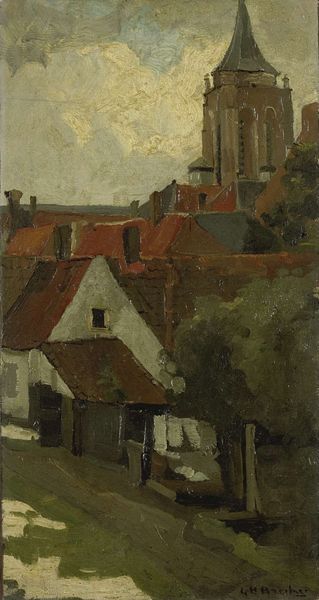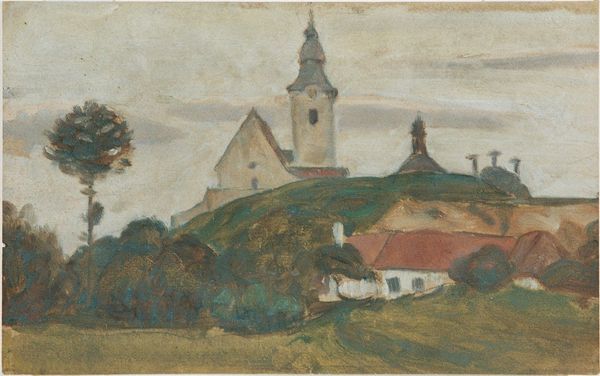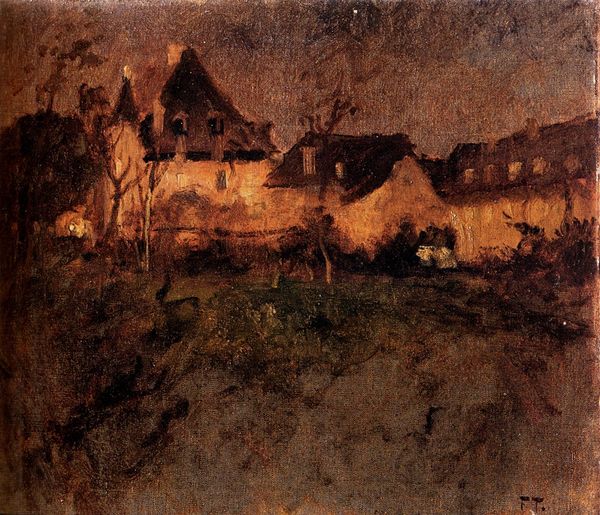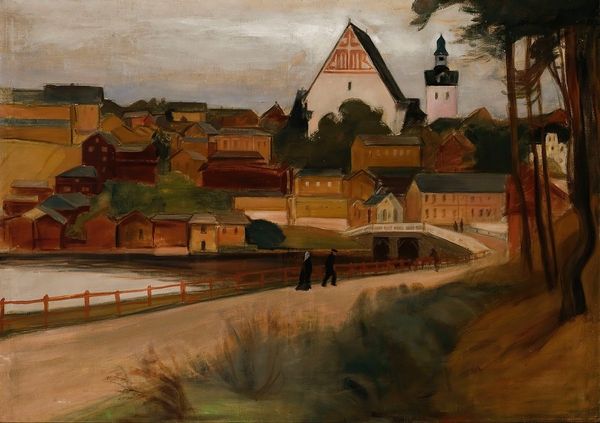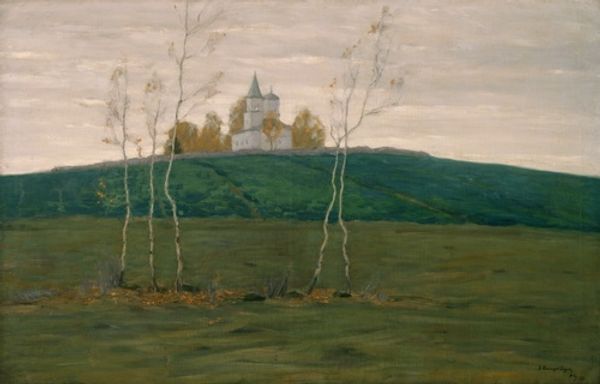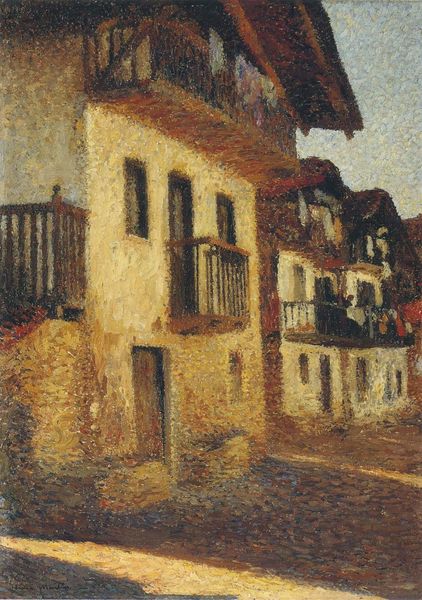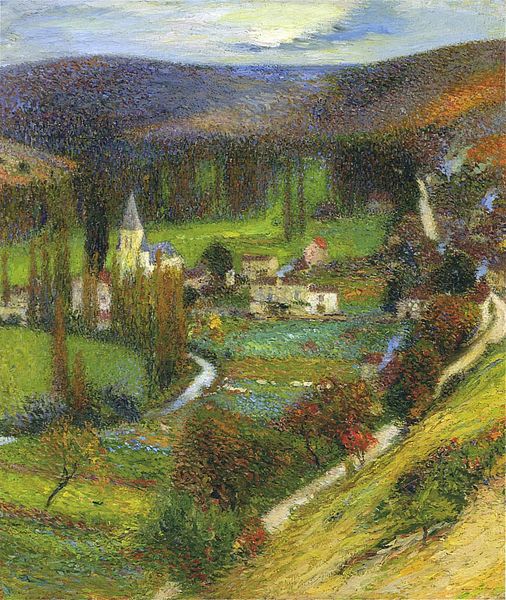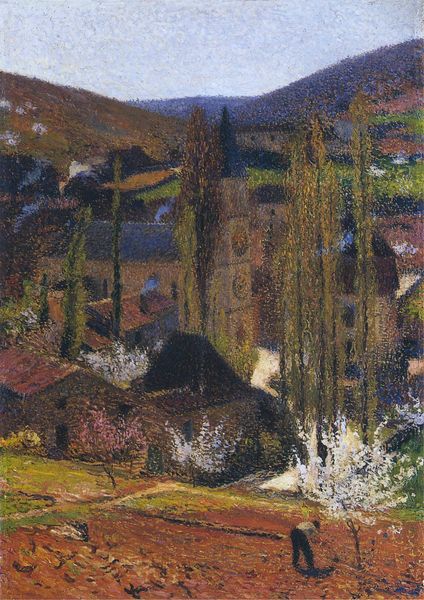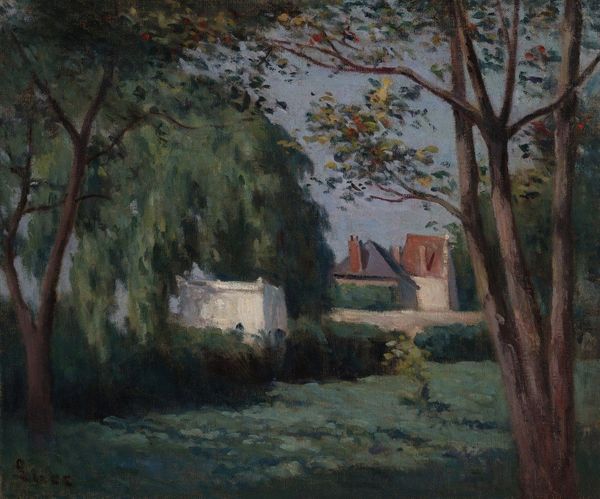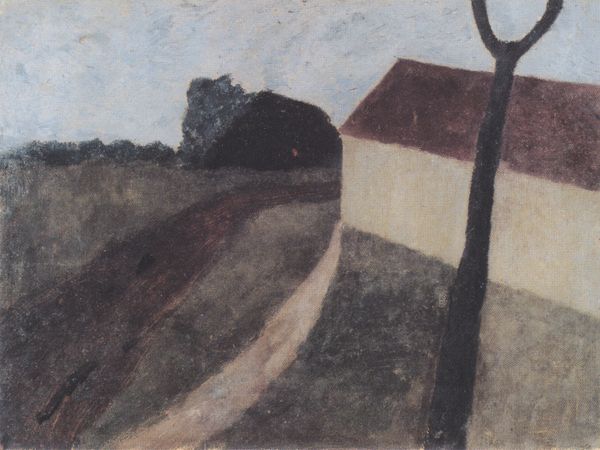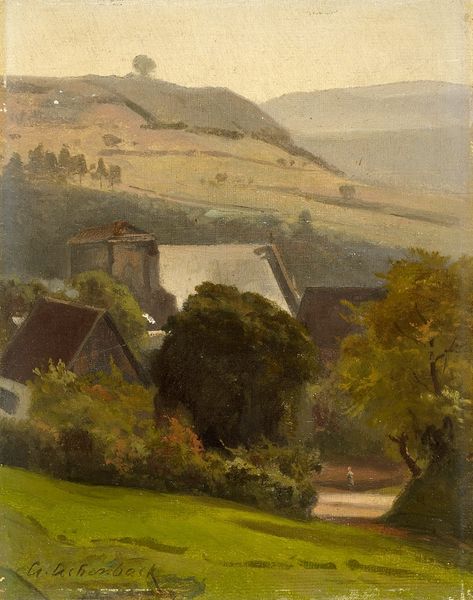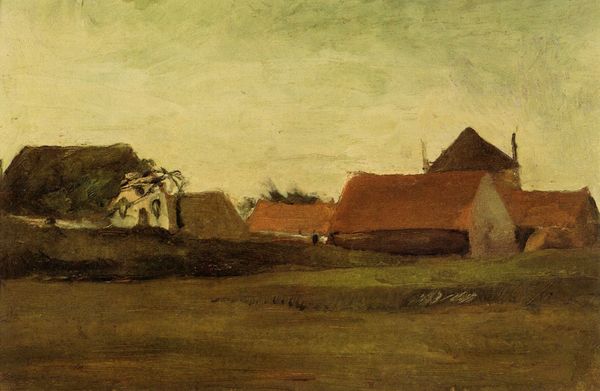
painting, oil-paint
#
painting
#
oil-paint
#
landscape
#
painted
#
oil painting
#
forest
#
cityscape
#
genre-painting
#
post-impressionism
Copyright: Public domain
Editor: We're looking at Henri Rousseau's "Landscape" from 1886, an oil painting currently held in a private collection. The composition feels almost like a stage set, with these quaint houses lined up at the front. What strikes you most about its construction? Curator: Observe how Rousseau employs a rigid horizontal division of space. We have the houses in the foreground, a dense band of trees, then the buildings situated on a hill in the distance, and finally a large grey sky filling most of the frame. Note the flattening of perspective; each element exists almost independently. Do you notice how the texture is consistent throughout, defying naturalistic representation? Editor: Yes, it's like each section is carefully placed, not quite blending as a realistic landscape might. The colors too seem deliberately separate. How does this conscious arrangement impact your understanding? Curator: The formalized arrangement redirects us away from representational accuracy, guiding us instead to consider the intrinsic properties of each element. For instance, how does the simplified form of the buildings relate to the dark tangle of the branches? Are they balanced? Are they discordant? The painting creates its own internal logic. Editor: So, the meaning comes from analyzing these visual relationships rather than seeking an external narrative? Curator: Precisely. Meaning emerges from the structural interplay of line, color, and form. Rousseau isn't aiming for an imitation of nature, but an autonomous visual system. Editor: I see! Focusing on the structural relationships gives me a new perspective on Rousseau's intention. Curator: Indeed. It reminds us to analyze the work itself as an independent creation and resist looking elsewhere for facile narratives or symbolism.
Comments
No comments
Be the first to comment and join the conversation on the ultimate creative platform.
